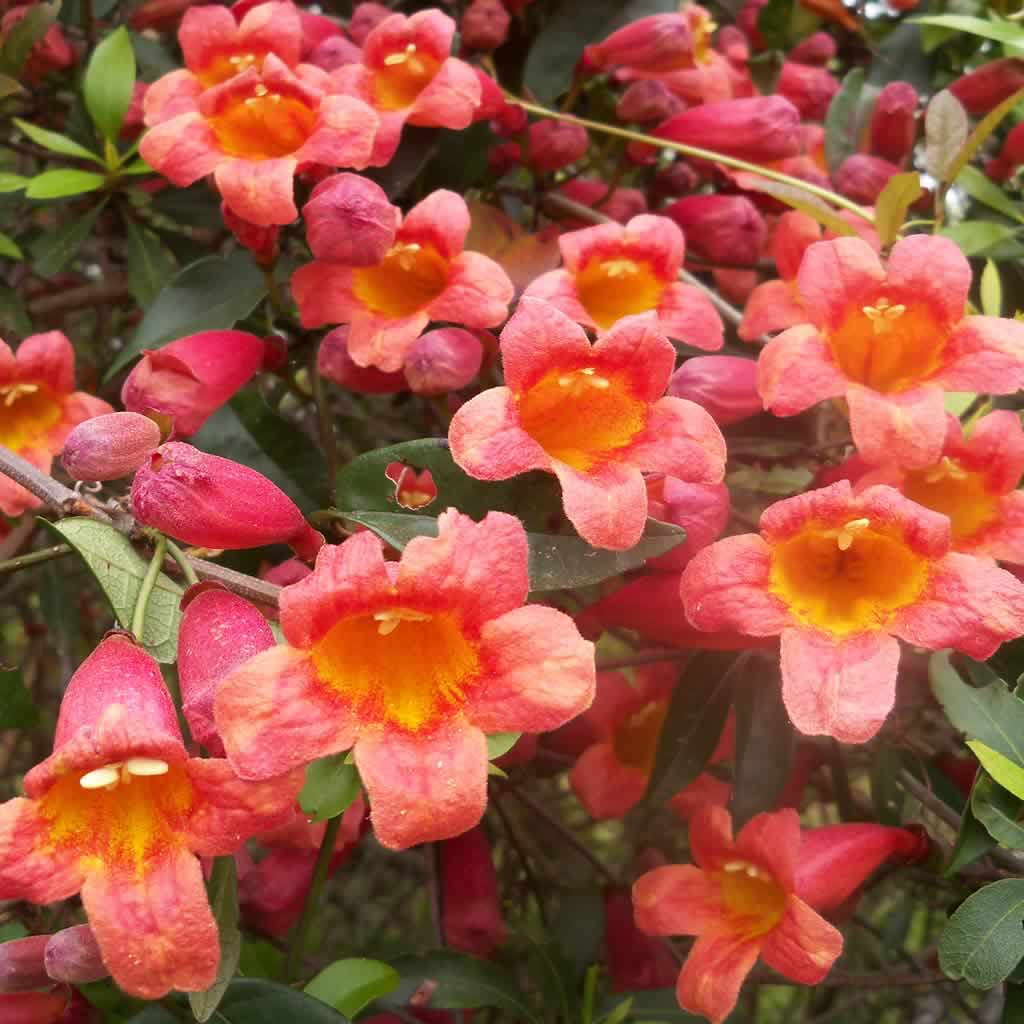
Prune the vine directly after blooming because it flowers on old wood. Indeed, there is little a gardener must do with the crossvine climbing plant once it is established other than prune it back from time to time, if it spreads outside its garden area. In this respect, Bignonia crossvine care is quite easy. The crossvine does not usually fall victim to insect pests or diseases, so no spraying is required. This is a gorgeous perennial Bignonia capreolata, also known as a cross-vine, with stunning tangerine flowers. When you plant, space the young plants 10 or 15 feet (3-5 m.) apart to give them room to mature. If you want to grow your own crossvines, you can do so from seeds or cuttings taken in July. The crossvine climbing plant will also grow in partial shade, but the flower growth might be diminished. Ideal crossvine growing conditions include a sunny location with acidic, well-drained soil. The attractive foliage remain evergreen in the South, but turns reddish-purple in fall with subsequent leaf drop in the norethern regions where it will grow.
#TANGERINE BEAUTY CROSSVINE FOR SALE HOW TO#
How to Grow a CrossvineĬare of crossvine plants is minimal if you grow these beauties in the best possible location. Tangerine Beauty is an easy-to-grow fast growing crossvine that covers structures quickly and produces LOADS of fragrant, bright orange-red trumpet flowers in spring. They stay green all year long in warm climates, but in slightly chillier regions turn a deep maroon in winter. The vine’s leaves are pointed and slender.

Whether or not that is true, it flowers generously and the blossoms last for up to four weeks. Some say the crossvine climbing plant bears more blossoms per square inch (6.45 sq. They are particularly attractive to hummingbirds. The cultivar ‘Tangerine Beauty’ offers the same quick growth but even brighter orange flowers. The blossoms appear as early as April and are bell shaped, the outside a reddish orange and the throat bright yellow. Modern gardeners are more likely to admire its spring-blooming flowers. Native Americans used crossvine’s bark, leaves, and roots for medicinal purposes. It grows wild in the northeast and southeast of the country, as well as the north and south-central regions. The crossvine climbing plant is native to the United States. Read on for more information about Bignonia crossvine care and information about how to grow a crossvine.

Crossvines are robust and vital vines, and care of crossvine plants includes little more than occasional pruning. Its claim to fame comes in springtime with its generous crop of trumpet-shaped flowers in orange and yellow hues.Ī crossvine plant is a perennial, and in mild climates, an evergreen. Crossvine ( Bignonia capreolata), sometimes called Bignonia crossvine, is a perennial vine that is happiest scaling walls – up to 50 feet (15 m.) – thanks to its claw-tipped tendrils that grip as it climbs.


 0 kommentar(er)
0 kommentar(er)
